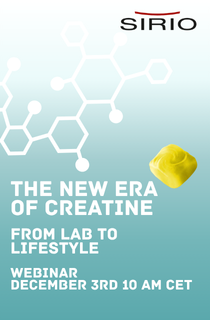ADM research on AOM users reveals nutrition innovation potential
Key takeaways
- ?ADM’s research shows strong demand for GLP-1-aligned food, beverage, and supplement innovation, with most medication users willing to pay more for products that support their health goals.
- Current users prioritize portion control, gut health, hydration, and muscle maintenance, with opportunities for proteins, biotics, and low-sugar formulations.
- Consumers discontinuing AOMs seek solutions that promote satiety, appetite control, and weight maintenance, highlighting a demand for fiber, protein, and digestive support.
As the use of anti-obesity medications (AOMs) continues to grow, proprietary ADM Outside Voice research identifies product innovation opportunities to support people using these solutions and others who have transitioned off the drugs. The company notes that both consumer groups seek enjoyable, convenient, and portion-controlled functional products tailored to their needs.
According to ADM’s research, 80% of consumers taking AOMs are willing to pay more for food and beverage products that provide added health attributes, with 67% saying that GLP-1-friendly attributes are now more important to them.
Almost all current users (91%) report being satisfied with their weight management progress, with 35% planning to continue taking GLP-1s as part of their long-term health management strategy.
People discontinuing AOMs generally had a positive experience with them, with reaching a target weight or health goal being the main reason people stopped using these drugs (36%).
Other key reasons to stop the medications were “unmanageable side effects” (26%), like digestive discomfort, lack of hydration, and feeling weak, and medication cost (23%).
The research examined the GLP-1 landscape in the US, UK, France, Germany, and Spain, analyzing consumers’ desires for complementary food, beverage, and supplement solutions to accompany medication use or the discontinuation of these drugs.

GLP-1 complements
ADM notes that over 90% of AOM users report being “willing to make lifestyle changes to support their treatment,” indicating they are open to modifying their habits to achieve more beneficial outcomes.
Three-quarters of users report feeling full more quickly, citing the importance of portion control (73%) and nutritional value (69%) as key factors.
In their food choices, users report paying closer attention to added sugar content (64%), calories (60%), total carbohydrates (56%), protein content (55%), and fiber content (55%).
In addition, 37% of people taking GLP-1s have increased their consumption of pre- and probiotics. ADM notes that this may be related to a common user concern for gastrointestinal discomfort.
 Some GLP-1 have increased their consumption of pre- and probiotics, which ADM says may be related to a common user concern for gastrointestinal discomfort.While on AOMs, supporting products should focus on maintaining muscle mass, minimizing gastrointestinal discomfort, and supporting hydration. Targeting these needs, ADM’s solutions platform for medication users includes proteins to support muscle health, biotics for gut health and digestion, and flavors and sweeteners to elevate “the appeal of beverages.”
Some GLP-1 have increased their consumption of pre- and probiotics, which ADM says may be related to a common user concern for gastrointestinal discomfort.While on AOMs, supporting products should focus on maintaining muscle mass, minimizing gastrointestinal discomfort, and supporting hydration. Targeting these needs, ADM’s solutions platform for medication users includes proteins to support muscle health, biotics for gut health and digestion, and flavors and sweeteners to elevate “the appeal of beverages.”
Discontinued use demands
People discontinuing AOMs look for solutions that promote satiety and manage weight regain. After stopping the medication, consumers need the most support in maintaining their weight, controlling their appetite, managing satiety, promoting muscle growth, and achieving digestive comfort.
ADM highlights its prebiotic dietary fiber, resistant tapioca starch, and plant-based ingredients as solutions to help increase fullness perception, while its pro- and postbiotics, high-protein ingredients, and sweetening solutions can support weight maintenance.
Although many consumers say they have maintained healthy habits after transitioning off GLP-1 medications, 76% of adults say they regained “at least some” of the weight they lost.
Maintained healthy habits include eating more fruits or vegetables (for 54% of previous users), better portion control (49%), cooking more meals at home (47%), increasing protein (33%), and upping fiber intake (32%).
While on these medications, consumers report a reduction in “food noise,” which returned for 60% of former users after discontinuing these medications. To suppress these intrusive thoughts about food and food cravings, two-thirds say they would reconsider restarting GLP-1s.
Meanwhile, GLP-1 science and pharmaceuticals are developing rapidly. Experts at the University of California, Davis, US, previously told Nutrition Insight that medications are expanding into multi-hormone combinations, new indication areas, and easier-to-use treatments.















